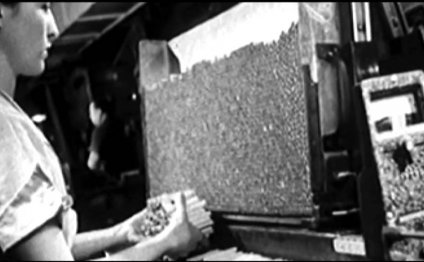
History of tobacco smoking
Tobacco, one of the most important cash crops in American farming, is native to the North and South American continents. It first became known to the rest of the world when European explorers in the 15th and 16th centuries saw it being used as a medicine and as a hallucinogen by Native Americans. The explorers returned to Europe with the new-found plant and it quickly was adopted by rich and poor alike as a drug of choice. Banned at first by kings and popes, its economic effects and broad popularity forced acceptance among all cultures. It quickly spread throughout the civilized world and became a foundation for the growth of the American economy.
This paper will trace the history of tobacco from its use by Native Americans through the end of the 19th century when mechanization and mass marketing started to make tobacco production the major industry it has become.
"Tobacco" is a name used for plants of the genus Nicotiana of the Solanaceae (nightshade) family. The name is also used for the product manufactured from tobacco leaves and used in cigars, cigarettes, snuff, and pipe and chewing tobacco. Different species of the tobacco plant, with different characteristics associated with smoking (e.g. fast burning, slow burning, mild, strong), have become popular in different parts of the world. The primary active ingredient of tobacco is the alkaloid nicotine, which is responsible for its narcotic and soothing qualities. (The Columbia Encyclopedia)
There is little reliable information concerning the early uses of tobacco by Native Americans prior to the arrival of Europeans in 1492. Some Mayan and Incan drawings and carvings appear to show tobacco in use in ceremonies but little is known of the actual meaning of those representations. Much was written concerning its use at the time of the European explorations, however, and there is no reason to believe that the uses witnessed in the 15th and 16th centuries were recent developments.
In 1492, when the floodgates of European explorers opened on North and South America, the many different native cultures there already had long traditions of chewing, smoking, and snuffing tobacco, sometimes in conjunction with other psychotropic plants. Used regularly in ritual and social contexts, tobacco and its counterparts were appreciated precisely for their physiological and mind-altering effects, which, among other things, aided the Amerindians in their pursuit of the supernatural. (Elizabeth Wyckoff)
VIDEO REVIEWS



Share this Post
Related posts
History of tobacco Regulation
National Commission on Marihuana and Drug Abuse THE BAN ON ADVERTISING Both the U.S. Public Health Service and Federal Trade…
Read MoreHistory of tobacco use in American
(Adapted from Tobacco Timeline by Gene Borrio.) The native people of the Americas considered tobacco a gift from the Great…
Read More










